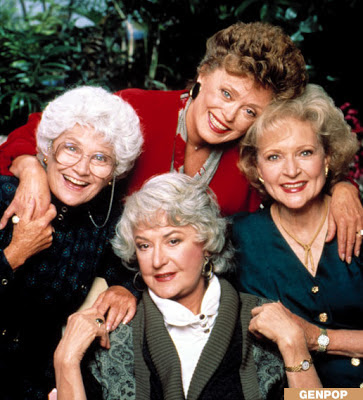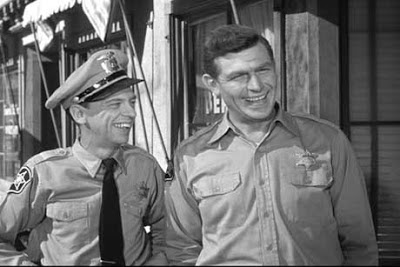The 1980s was the last true
classic TV decade. Which is not to say that television hasn’t introduced many
brilliant shows in the 20 years since – only that the medium, and our
relationship to it – has drastically changed.
Cable and satellite
television added hundreds of viewing options to our TV menu. As a result,
viewership for even the most celebrated shows has been greatly
diminished. Series such as Mad Men, Game of Thrones, Girls
and Breaking Bad are watched by
about 10% of the people that watched the lowest-rated network shows in the
1960s, ‘70s and ‘80s.
The introduction of the
VCR, followed by TiVo, the DVR and programs streaming on Netflix and mobile
apps, allow viewers to view programs whenever they like. So even if 10 million
people watch The Walking Dead,
they’re not all watching at the same time.
For better or worse, new
channels and new technology have abolished the communal pop culture experience
that television once provided.
That experience, to me, is what separates the classic TV era from our
current TV age.
The times were already
changing by the 1980s, but if you can't find your Betamax tapes here's a reminder of
the best television of the decade.
Hill Street Blues
Though it was preceded by
30 years of cop shows, Hill Street Blues immediately looked and felt different from anything that had come
before. The large, multiracial cast, the frank portrayals of sex and violence,
the handheld camerawork that put viewers inside the Hill Street station,
sometimes uncomfortably so, all seemed to represent a sea change in dramatic
television.
Cheers
The last great workplace
comedy of the classic TV era (though Taxi would also get some votes) Cheers was lucky to survive a first season where it ranked at the bottom of
the ratings. Once it found an audience the series lasted more than 10 years,
gracefully adapting to multiple cast changes like no other show since M*A*S*H.
Moonlighting
Sardonic and
self-referential, Moonlighting
was a one-hour detective show that generated more laughs than a situation
comedy. The easily-confused Television Academy steered all its Emmy nominations
into the Drama category, though the series’ only real drama was whether costars
Bruce Willis and Cybill Shepherd could coexist long enough to keep the magic
fresh. They couldn’t, and it didn’t. But for three seasons Moonlighting
was a masterpiece.
Roseanne
Many of the best shows of
the 1980s were created by the first generation to grow up with television.
Roseanne Barr, raised on sitcoms like Leave it to Beaver and The Donna Reed Show, believed it was time for a less idealized take on
family life. And that’s what she delivered, though her self-titled series lost
its way in later seasons.
Miami Vice
“MTV cops” was the two-word
pitch that allegedly sold this sun-drenched, pastel-colored series to NBC.
Parts of Miami Vice are now as
badly dated as Valley girl talk and Members Only jackets, but the slick visual
style of executive producer Michael Mann and Jan Hammer’s scoring both left
their imprint on the crime drama genre – you can see echoes of them in shows
airing today.
The Cosby Show
It’s surprising that it
took this long for a family like the Huxtables to achieve mainstream
acceptance. And it’s also regrettable that, without Bill Cosby’s
cross-generational, cross-cultural appeal, we’ve seen no comparable heir to
their success.
Star Trek: The Next
Generation
Most of us who remember the
build-up to this sequel were pretty sure it wasn’t going to work. Even many of
the hardcore Star Trek fans were
ambiguous, concerned it might soil the legacy of Gene Roddenberry’s original
classic. Instead, Star Trek: The Next Generation expanded and deepened the Trek universe, paving the
way for three more series.
Newhart
The inspired final episode
was one of TV’s most talked-about moments, but Newhart also earns a place on this list for updating the
absurdist rural archetype established by Green Acres. Just like Eddie Albert’s Oliver Douglas, Newhart’s Dick Loudon was a sane man set adrift among
lunatics.
Thirtysomething
A love-it-or-hate-it show
that divided generations almost as much as The Smothers Brothers, Thirtysomething was a series about baby boomer disillusionment. It
struck a chord with viewers coping with the same family and career issues, but
others were turned off by what they saw as self-absorbed navel-gazing.
The Golden Girls
Building a show around four
senior citizens was distinctive, but in every other way The Golden Girls was as traditional as comedies get. It holds up
thanks to the steadfast expertise of three TV sitcom vets, and an unknown stage
actress (Estelle Getty) who consistently trumped their punch lines.
The Wonder Years
The music and the fashions
and the Vietnam references set this coming-of-age series in a very specific
time and place, but there was also something universal about the struggles of
Kevin Arnold. One hundred years from now, adolescent boys will still identify
with his sibling issues, school issues, and the agony and ecstasy of falling in
love with the exquisite Winnie Cooper.
St. Elsewhere
Before St. Elsewhere, hospital shows tended toward idealized depictions
of doctors and nurses. The staff of St. Eligius would make Marcus Welby cringe,
and the show itself never attracted much of an audience. Fortunately, this was
a time in television when quality still counted, and NBC gutted out six
low-rated but magnificent seasons. The last episode, unfortunately, was a
self-indulgent misstep.
Night Court
No gimmicks, no
breakthroughs, no landmark episodes – just superb comedy. Stay with it through
an inconsistent first season – after that it’s all good, especially in the
Markie Post years.
Designing Women
Designing Women
Both politically charged
and politically incorrect, Designing Women was a showcase for Dixie Carter’s supercharged sermonizing, Delta
Burke’s entitled cluelessness, and Jean Smart’s downhome charms. But when Burke
and Smart leave, you should too.
Married With Children
In the 1970s it was Soap that heralded the collapse of culture and
civilization; in the 1980s that title passed to this series, one of the first
on the then-new FOX network. It was comedy wielded like a blunt instrument, but
it lasted ten years.
Extra Credit
For more ‘80s goodness,
check out these shows as well:
Square Pegs
L.A. Law
Max Headroom
China Beach
Murphy Brown
Family Ties



















